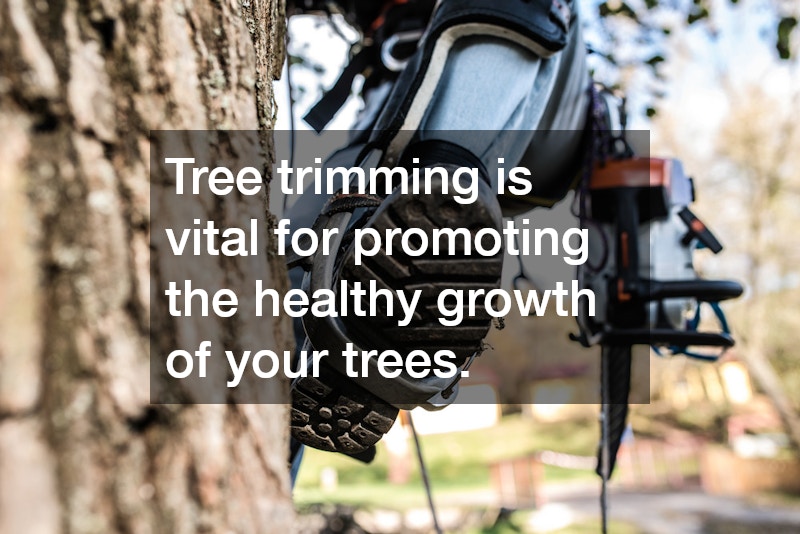Tree Trimming vs. Tree Pruning: What’s the Difference and Why It Matters
In this article, we will explore the nuanced differences between tree trimming and tree pruning. Understanding these differences is vital for maintaining the health, aesthetics, and safety of your trees. We’ll delve into the importance of each practice and how they contribute to the well-being of your landscape.
Why is Tree Trimming Important?
Enhancing Tree Health
Tree trimming is vital for promoting the healthy growth of your trees. By removing dead or diseased branches, trees can better allocate nutrients to healthier parts, extending their lifespan. This practice not only fosters stronger growth but also reduces the chances of tree failure, ensuring stability and vigor.
A well-trimmed tree experiences less competition among its branches, which allows for better sunlight exposure and air circulation. These factors are crucial in enhancing photosynthesis, critical for tree survival and vitality. Insects and diseases often inhabit dead and decaying wood, so timely trimming helps prevent infestations and infections.
Moreover, consistent trimming allows trees to heal faster from wounds, minimizing the likelihood of decay setting in. The practice encourages the formation of callus tissue, which seals off injury points. Investing in regular tree trimming can significantly mitigate long-term health issues in trees.
Aesthetic Appeal
Tree trimming greatly contributes to the visual appeal of trees, especially in landscaped environments. By selectively removing specific branches, trees can be shaped to complement the aesthetic of residential and commercial properties. This not only enhances the beauty of a given area but also adds value to properties.
A well-maintained tree landscape can have a powerful psychological impact, promoting relaxation and well-being. Trees that are regularly trimmed are more likely to maintain their desired shape and size, creating a cohesive visual harmony. Aesthetically pleasing environments are known to boost community spirit and promote outdoor activities.
Moreover, an attractively trimmed tree can serve as a focal point, drawing attention and admiration from visitors and passersby. Landscapers and gardeners often combine trimming with other horticultural practices, achieving a balanced and sophisticated aesthetic. Investing in tree trimming can transform ordinary landscapes into extraordinary displays of lush greenery.
Safety Considerations
Trimming plays a key role in enhancing safety by reducing the risk of falling branches and debris. Trees that overhang roofs, power lines, or footpaths pose significant hazards that can result in property damage or personal injury. Regular trimming ensures that trees do not become a safety liability for homeowners and communities.
By maintaining clearance from structures and utility lines, trimming decreases the chances of accidents during storms and high winds. In urban areas, this is particularly crucial where dense tree canopies can obstruct vital infrastructure. Therefore, trimming can help in avoiding costly repairs and liability issues.
Furthermore, overgrown trees can impede visibility for drivers and pedestrians, increasing the likelihood of accidents. Maintaining open sight lines is especially important at intersections and driveways. Overall, trimming is not just a horticultural practice but also a necessary safety measure for urban and rural landscapes alike.
What are the Benefits of Tree Pruning?
Growth Control
An essential aspect of pruning is its role in controlling tree growth and form. By proactively cutting back branches, tree owners can guide the shape and size of trees to fit spatial constraints. This practice is especially important for trees planted near buildings, roads, or in limited spaces.
Pruning focuses on removing specific parts of a tree to improve its structure or direct its growth. It allows sunlight to penetrate the leaf canopy more easily, boosting energy production through photosynthesis. The process also prevents trees from becoming top-heavy, reducing the risk of toppling.
In terms of growth, annual pruning is particularly beneficial during the dormant season when trees are less active. This timing helps to minimize stress on the tree while allowing it to acclimate to its new shape. Pruning is a proactive approach in managing and directing the future growth of a tree.
Improved Fruit Production
Pruning is crucial for fruit trees as it enhances fruit production both in yield and quality. By removing old, non-productive branches, trees can focus their energy on producing bigger and better-quality fruit. It also opens up the canopy to more sunlight, which is vital for fruit ripening.
Consistent pruning helps maintain an open canopy, allowing for better air circulation that keeps fungi and pests at bay. It also makes it easier to apply sprays or harvest fruits, promoting more effective management practices. With well-pruned trees, each branch receives sufficient resources to produce a maximum yield.
Moreover, appropriate pruning encourages the development of fruiting wood, ensuring long-term productivity. Balanced pruning prevents overbearing and helps sustain fruit production from year to year. Ultimately, a strategic pruning approach can significantly increase the economic value of fruit orchards.
Disease Prevention
Pruning is a frontline defense in preventing the spread of diseases within trees. By promptly removing infected branches, gardeners can halt the progress of disease and protect the overall health of the tree. This preventive measure can save trees from diseases that might otherwise necessitate complete removal.
Disease control through pruning involves removing not just visibly infected branches but also those that show potential signs of disease. Early detection and removal protect neighboring vegetation from contamination and ensure a healthy ecosystem. Moreover, pruning improves airflow within the tree canopy, an essential factor in reducing fungal issues.
Armed with pruning saws and clippers, arborists can safeguard not only individual trees but entire landscapes from disease spread. Timely pruning can prevent minor infections from escalating into significant outbreaks. Thus, pruning is both a preventive and corrective measure for maintaining tree health.
Conclusion
In conclusion, both tree trimming and pruning are essential aspects of tree care that serve different, yet complementary purposes. Regular maintenance through these practices ensures not only the health and productivity of trees but also contributes to the safety and beauty of our environments. Understanding these techniques will guide you in making informed decisions regarding the care of your trees.

